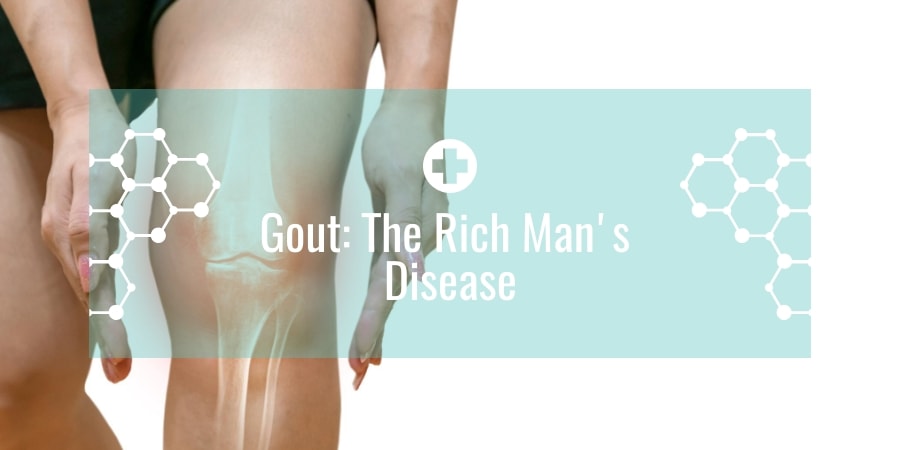Gout is predominantly a disease of adult men. Women form only about 5% of cases and usually after menopause. The disease derives its name from the Latin word ‘gutta’ meaning ‘to drop’. It was postulated in ancient times, and correctly so, that the joint pains resulted from the ‘dropping of morbid matter from the blood and onto the joints’. We now know this ‘morbid material’ to be uric acid crystals.
Once it reaches a critical level in the blood, uric acid settles in joints and forms sodium crystals. Within a few hours, inflammatory occurs. Why uric acid crystallises in some people, but not in others, is unclear. It could be a genetic predisposition. Other factors are obesity and alcoholic binge-drinking.
While there is a strong correlation between gout and high levels of uric acid, the relationship is not inevitable. It is estimated that only about 5% – 10% of people with high uric acid (hyperuricaemia) will get gout, the rest being labeled as asymptomatic hyperuricamea.
The pain typically starts in the early morning, and commonly affects the big toe. Other joints affected can be the ankle, knee or even the instep on the sole of the foot. The pain is so excruciating that the victim cannot even bear the weight of bed clothes on his foot.
The pain is usually self-limiting and if no treatment is given, peters out within 7-10 days. The next attack may occur within weeks or month if nothing is done to bring down uric acid levels or avoid precipitating factors.
What to avoid
Uric acid is a by-product of the metabolism of purine, a protein found in nucleic acids. Nucleic acids are essential for the body because they provide the building blocks of the genetic material in individual cells.
Uric acid is derived from 2 sources – metabolism of dietary sources and from endogenous or inherent purine metabolism in the body. Except for drug treatment, little can be done about the latter. The other strategy, therefore, is to reduce the intake of purine-rich foods.
Foods can be classified as those that yield high levels of purine (150 – 825mg per 100g portions), moderate (50 – 150mg) and low amounts (0 – 50mg).
Foods with the highest amount of purines include sardines, liver, brains, herring, kidneys, scallops, gravies and sweetbreads.
Foods with moderate amounts are eel, red meats like beef and lamb, meat soups and broth, poultry like duck and turkey, shellfish (crabs, lobsters, and oysters), vegetables like spinach, asparagus, cauliflower, legumes, beans, lentils, peas, mushrooms, whole-grain bread and cereals, oatmeal, wheat germ and bran.
Those with the lowest amount of purines are beverages like coffee or tea, breads or cereals without whole grain, cheese, eggs, milk fruits, sugars and syrups, and vegetables not mentioned above.
Also avoid fats, because they reduce the excretion of uric acid in the kidneys. To encourage excretion of uric acid, drink 2 – 3 liters of fluids daily. Diluted fruit juices also help. Lastly, avoid binge-drinking, especially beer.
Treatment
Unfortunately, some of the above measures will not prevent recurrent attacks. Such patients have little choice but to take medication.
These are basically of 2 types medications – one reduces the metabolism of purines, while the other promotes the excretion of uric acid from the kidneys.
These drugs have to be taken long term and can have side effects. The best solution, therefore, is dietary change.
Avoid the eating habits of the rich and instead, lead the simple life of the everyday man. Many patients become vegetarians because of the memory of gout pain. Furthermore, the change would be easier on your pocket!
